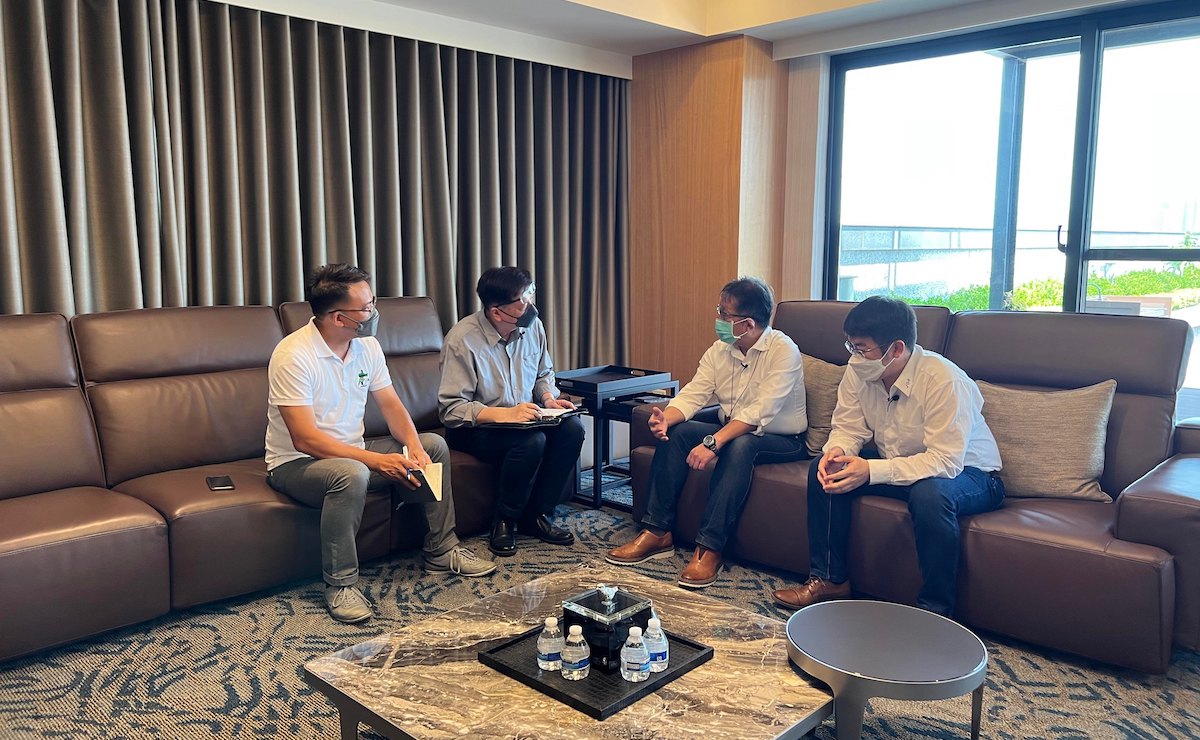Autonomous driving technology is the key new technology in the new era of automobile. In the past few years, the development of environmental sensing can be divided into two branches… one simply utilizes cameras to conduct pure visual sensing and image discrimination technology, which is best known for Tesla’s Auto Pilot; the other one is sensor fusion technology that is led by Waymo, which includes camera lens, LiDARs, and radars with various measuring distances. However, either branch must utilize camera lens. In the morning of 26th July, the editors of Auto Future came to Shun On Electronic, which is located in Neihu, Taipei City, to visit the CEO – Ching-Wen Hsu and the CTO – Ji-Jen Hsu to have more detailed understanding about the current status and the application range in the future of camera lens.

Shun On Electronic, which has been established for more than 20 years, was originally focused on the development of conductive film for computer keyboards; In 2017, Minth Group, the major automotive parts supplier, acquired Shun On Electronic to begin automotive-related business. Since then, Shun On Electronic fully dedicated into the R&D of automotive camera lens, from the reverse camera in the beginning, then keep improving the level of technology, to AVM (Around View Monitor) nowadays, and the CMS (Camera Monitor System) that had been applied in digital rear view mirrors; and the resolution of cameras had been increased from 1M to 2M, 5M, or even 8M pixels, which can be applied in various needs of the vehicle functions. Because CMS is related to driving safety, the test standard is much higher, and therefore the level of technology and the difficulty of manufacturing process are relatively high; Camera lens that had been applied in autonomous driving vehicles need the integration of aspects including “light, hardware, electricity, heat” during the R&D stage… When lens is under glare, poor visibility, or heat-dissipating problem caused by high energy consumption out of high resolution design, it needs the software algorithm behind the hardware to conduct real-time optical compensation and related adjustment, to ensure the normal operation of the lens. In addition, in the R&D of IR Camera, Shun On Electronic had owned quite a few technology achievements, and it can help identify the environment and objects that ordinary camera lens on autonomous driving vehicle could not detect in raining or foggy weather conditions. The clients of Shun On Electronic are major carmakers across USA, Japan, Europe, China, and they also cooperates with BEV startup companies… for instance, NIO’s camera lens are all supplied by Shun On Electronic. The application of automotive camera lens isn’t only for high-end technologies including driving assistance or autonomous driving vehicle, but also for in-car monitoring, integration of headlights functions, and the screening of feedbacks from environment sensing information for autonomous driving…
- In-car monitoring. Euro NCAP had announced that new car models are mandatory to be installed with DMC (Driver Monitor Camera). Even most of newly-developed cars are equipped with L2 ADAS, but drivers still need DMC to actively detect and alert when unconcentrated or fatigue driving situation happened; in addition, DMC can provide passive safety… when accidents happened, the way of deployment of airbags can be adjusted by the driver’s sitting position and body size detected by cameras to reduce the possibility of injury; besides, it can adjust seat position and A/C function setting for drivers by biometric verification. And now the demand of OMC (Occupant Monitor Camera) had been derived; in addition to OMCs with basic functions already being developed and produced, there are advanced application… When the era of autonomous driving vehicles comes, there are no drivers anymore, and every car-users are passengers; Shun On Electronics’ 5M pixels camera, plus the RGB-IR image sensing technology can provide live streaming and video conference service for passengers inside the car, and monitoring for any dangerous activity to jeopardize passengers’ safety (e.g. unbuckle seat belts, disable airbags function). This technology will be commercialized in the upcoming two years.
- The integration of headlights functions. Shun On Electronic established a joint venture – Min Yin Electronic with Tayih, a major automotive lights manufacturer, to provide advanced intelligent headlamp products. For instance, installing the camera inside the HMSL (High-mounted stop light) in a American-made car model nowadays; or with the stable brightness and illumination zone from headlamps, camera lens inside will be more effective in the application of autonomous driving technology. The clean room for mass production, which is located in Tainan, is under certification currently, and it’s scheduled to begin production and delivery in Q4.
- The screening of feedbacks from environment sensing information. The autonomous driving system continuously detect and collect information from the driving environment to give feedbacks to the system for decision-making, the amount of information is extremely huge that needs AI chips with high computing power to proceed with, so camera lens must determine and filter out insignificant environment information thru software algorithm to prevent wasting the computing capacity of the system. When this technology is realized, it will bring forward the timing of the commercialization of autonomous driving technology.
In the leadership of CEO Hsu and CTO Hsu, Shun On Electronics, which obtained ISO 26262 (Road vehicles – Functional safety) certification this year, is marching toward the arena of automotive new technology worldwide with the strong resource support from parent company – Minth Group. CEO Hsu also shared his experience in the territory of automotive technology with traditional automotive supply chain and new technology industry… They shouldn’t be too conservative in the R&D of new technology and should take the long view of the timetable; Don’t try to master in multiple development works of new technologies at the same time, but to collaborate with companies in the same or even different industry instead, to take control of the timetable and the business opportunities that might come fast in the future.